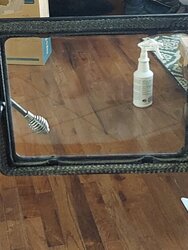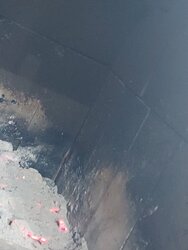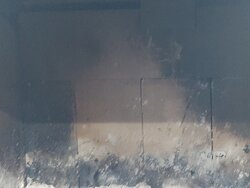Hey...have a really stupid question. We just got this England The Madison model wood stove put in about three days ago.
I noticed just now that there seems to be a crack in the fire box, where the dog house is. The cracks around the box are filled with ash. The glass on the door also seems to have a crack inside the glass and it's black....what the heck could have caused this?
I think my husband over fired it when he did the first burn. He filled it to the top with logs and operated it at such high heat that I believe that is what caused this. He also burned so hot that the ash has been covering the dog house hole since the first time it was burned in. He didn't follow the instructions to do three small burns the first time either. He got it fired up and kept it at that temperature for hours. I cleaned out the ash once already...I'm waiting for it to fully cool down to clean it out fully.
Help anyone?



I noticed just now that there seems to be a crack in the fire box, where the dog house is. The cracks around the box are filled with ash. The glass on the door also seems to have a crack inside the glass and it's black....what the heck could have caused this?
I think my husband over fired it when he did the first burn. He filled it to the top with logs and operated it at such high heat that I believe that is what caused this. He also burned so hot that the ash has been covering the dog house hole since the first time it was burned in. He didn't follow the instructions to do three small burns the first time either. He got it fired up and kept it at that temperature for hours. I cleaned out the ash once already...I'm waiting for it to fully cool down to clean it out fully.
Help anyone?











